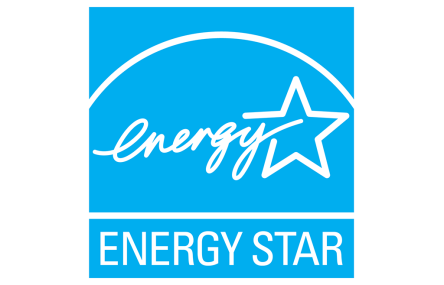The U.S. Environmental Protection Agency’s ENERGY STAR program has helped business owners and individuals save money and protect the environment through energy efficiency since 1992. Now there’s a new dimension to the program. In the fall of 2017, EPA launched the ENERGY STAR Tenant Space pilot program to promote energy efficiency in commercial tenant spaces. EPA recently recognized 48 office tenants that demonstrated commitment to energy efficiency and environmental stewardship. The award recipients met five energy efficiency criteria during the 10-month Tenant Space pilot program: estimate energy use, meter energy use, light efficiently, use efficient equipment and share data. Recipients of 2018 ENERGY STAR Charter Tenant Space Awards include Forest City Realty Trust Inc., Kilroy Realty Corp., LinkedIn and Shorenstein Realty Services LP. Some organizations, such as Cushman & Wakefield, Harvard Pilgrim Health Care, JLL and JPMorgan Chase, earned recognition for multiple locations. “Adhering to sustainable best practices not only enhances our bottom line, but it also highlights our broader efforts to consistently act as a responsible corporate citizen,” Jason Kern, CEO for LaSalle Americas, said in a statement in June following the designation of LaSalle’s corporate headquarters in Chicago as a Charter Tenant Space Award recipient. Along with verifying its electricity meters, LaSalle estimated the office’s energy consumption using an online tool developed by EPA with analytical support from the U.S. Department of Energy. The company documented its nearly 100% LED lighting fixtures, daylighting/occupancy sensors and nearly 100% ENERGY STAR certified equipment and appliances. LaSalle also established an ENERGY STAR Portfolio Manager account to measure energy and water consumption. The voluntary Tenant Space program was created by the Energy Efficiency Improvement Act of 2015, which encourages owners and tenants to implement high-performance energy efficiency measures in commercial buildings. EPA continues to analyze the...
Score Alert
New ENERGY STAR Metrics
The U.S. Environmental Protection Agency’s ENERGY STAR® score gives building owners a snapshot of their property’s energy performance by comparing it to a database of similar buildings. Performance metrics in ENERGY STAR Portfolio Manager®, an online tool for tracking energy and water consumption and greenhouse gas emissions, changed on Aug. 26 to reflect the most recent market data available. This update is part of EPA’s standard process to “keep ENERGY STAR metrics as current as possible, and reflective of current market performance,” the agency says. The revised ENERGY STAR criteria incorporate the most recent Commercial Buildings Energy Consumption Survey (CBECS), which constitutes the baseline against which owners compare their buildings to earn certification. In short, the change is an effort to make sure that the “similar building” comparisons for performance are as accurate as possible. EPA continues, “The most recent market data available shows an overall improvement in the energy performance of the U.S. building stock in recent years. So when Portfolio Manager metrics are updated on August 26, ENERGY STAR scores and other performance metrics will, on average, go down.” The new calculations “will be applied across all time periods, which means scores and metrics for all historical benchmarking data will change. By applying this update across all time periods, you’ll continue to be able to analyze changes that are a result of your own activities, rather than changes in underlying market data.” “The change is significant for buildings pursuing LEED or Green Globes certification, for buildings with GSA or other government space leases tied to an ENERGY STAR score of 75, for buildings in cities with mandatory benchmarking, and for the more than 450,000 commercial properties that have an ENERGY STAR score,” says Baltimore environmental attorney Stuart Kaplow, publisher of a green...
Managing Disruption
Insights from Yardi Canada
The spotlight shone on Yardi Canada for much of late November and early December at major industry events in Toronto. The company was the closing roundtable sponsor at the Global Property Market Real Estate Forum and sponsored the Toronto Real Estate Forum’s keynote session. Yardi Canada was also the top-level Title Sponsor and staffed a booth at PM Expo, the property managers’ exposition portion of The Buildings Show, Canada’s largest event for the design, architecture, construction and real estate communities. Yardi was also the Platinum Sponsor for the Federation of Rental-housing Providers of Ontario (FRPO) 2017 MAC Awards gala, a dinner and awards show that recognized excellence in rental housing advertising, construction and renovations, environmental excellence, customer service and other categories. Peter Altobelli, vice president of sales and general manager for Yardi Canada, presented at PM Expo’s “Disruptive or Transformational Technology: Understanding the Impacts for Property Managers and Owners” session. Peter began the session by clarifying that disruption may be defined as an outside force that mobilizes technology transformation within an organization. We have seen these types of disruption in the way we access and use data analytics to inform business decisions and the way in which we store information in the cloud. An organization’s ability to transform through technology is the key force in maintaining their competitive stance in the market. “It’s all about changing a mindset and using advanced technology that can perform various business operations in new ways,” he said. “Disruptive automation technologies can give property managers new insight into leasing, energy management and other operations that improves decision-making.” Yardi Canada was active in another session at PM Expo as Martin Levkus, regional director for Yardi Energy, Sales, moderated a discussion among three building energy management experts in the “Energy Data...
Energy Management
Future of Savings + Retention
Transparency Market Research reports that the global energy management systems (EMS) market continues to grow. The market will show an estimated compound annual growth rate of 13.4 percent between 2015 and 2023, leading to a valuation of $36 billion by 2024. The estimate reflects ongoing confidence in the benefits of sustainable initiatives. Increasing Demand Several factors contribute to the rising demand for EMS. Current fossil fuel sources lack security and sustainability. The long-term projections by the International Energy Agency forecast a rise in such energy costs. As a result, organizations—particularly office, retail, and industrial spaces– strive to mitigate rising expenses by decreasing dependency on non-renewable fuels. Data gathered by EMS highlights opportunities for organizations to use less energy while maintaining optimal site performance. Smarter energy use will minimize waste and keep operating costs low. EMS also contribute to higher property values. The value of buildings with sustainable features exceeds the value of conventional structures by a median increase of 7 percent, reveals a joint study conducted by Dodge Data & Analytics, United Technologies Corporation, and World Green Building Council. The Drive Toward Healthier Buildings report states that 73 percent of green building owners are able to increase their leasing rates and 62 percent achieved higher asset values. EMS help buildings achieve and maintain the standards needed for green building certifications, increasing the ability to lease and resale sites with higher value and fewer concessions. The drive for increased productivity, employee satisfaction and retention also contributes to the increasing demand for EMS. Research points to occupant health as a component of employee satisfaction and retention. In The Drive Towards Healthier Buildings, 79 percent of respondents believe wellness-focused buildings will lead to improved employee satisfaction. Business owners listed products that enhance thermal comfort, such as EMS, among the...
Benchmarking Bonus
NAA Return on Energy
Currently, over 45% of the US commercial building market uses the ENERGY STAR®, the US EPA’s voluntary certification program designed to measure energy efficiency and improve resource management. At the heart of ENERGY STAR® lies the ability to track energy usage data to reduce energy consumption and improve building performance. “It all starts with taking a look at what you have and seeing what [information] you’re tracking and what data is available,” Craig Haglund, Program Manager, for the US EPA’s ENERGY STAR program, said in the National Apartment Association’s recent webinar, Financial Success with Energy Benchmarking. With comprehensive data collection and analytics capabilities, US EPA’s Portfolio Manager works in concert with ENERGY STAR for complete resource management oversight. “They say ‘you can’t manage what you can’t measure,’ which is 100% true,” Haglund continued, “but that misses what you can do with all that data.” Whole Building Consumption For building owners and managers interested in tracking their energy, water and waste metrics, ENERGY STAR provides an easy, comprehensive management tool: Portfolio Manager. With Portfolio Manager, building data can be tracked and analyzed. Users can create customized reports and monitor changes in energy, water, greenhouse gas emissions and more. “Portfolio Manager literally includes hundreds of measurement metrics,” explained Haglund. “Standardized reports can help users assess portfolio performance and share that information or integrate it into other presentations.” Those measurement metrics can be applied to any sized property portfolio, from one building to, in the case of East Coast real estate services firm Bozzuto Management, 63,000 units spread out over 220 communities and representing 2.1 million square feet of mixed-use development. “We have been using Portfolio Manager since 2012,” said Bozzuto’s Director of Sustainability, Peter Zadoretzky. “Over the last couple of years, we’ve gone from a messy,...
Grid-Sized Storage
Energy Efficiency
Late last month, Southern California Edison switched on its newest substations, an 80MWh lithium-ion battery storage facility that will manage peak demand and improve grid reliability. Just off Interstate 15, nestled in the heart of California’s Riverside County, one of the world’s biggest energy storage projects recently roared to life. Part of a collaboration between Tesla and Southern California Edison (SCE), the installation at the Mira Loma substation will be used to manage peak energy demand and stabilize the grid. “Upon completion, this system will be the largest lithium-ion battery storage project in the world,” declares a Tesla blog post announcing the project. “When fully charged, this system will hold enough energy to power more than 2,500 households for a day or charge 1,000 Tesla vehicles.” Managing Peak Energy The Mira Loma project is one of the first to use Tesla’s new Powerpack 2 for utility-scale energy storage. With an 80 MWh capacity, the 400 Powerpacks will allow SCE to manage energy use during peak hours. The Powerpacks will be charged with electricity generated during off-peak hours and then supplement demand during periods of peak demand. This process will not only save energy; it will allow SCE to maintain grid reliability, deliver better power quality to customers and reduce dependence on fossil fuels. “The system will charge using electricity from the grid during off-peak hours and then deliver electricity during peak hours to help maintain the reliable operation of Southern California Edison’s electrical infrastructure which feeds more than 15 million residents,” explains the Tesla statement. “By doing so, the Tesla Powerpack system will reduce the need for electricity generated by natural gas and further the advancement of a resilient and modern grid.” Future Expansion Larger utility-scale energy storage projects are already in the works...
Energy Management
2013 NAA Green Conference
Yardi’s Matt Miller will moderate the “Green Building and Utility Management – Doing it Right Makes Sense,” panel at the 2013 NAA Green Conference, planned for April 15-17 in Baltimore, Md. Panelists are William J. Greene III of Wood Partners, Manny Gonzalez of KTGY and David Woodward of CompassRock, industry leaders with strong backgrounds in utility management and green building strategy. Miller, industry principal for Yardi Energy Solutions™, will serve as moderator. The session will focus on how effective energy management can add value for property managers, investors and residents in the multifamily industry. Topics of coverage include the value of LEED certification, installation tips, the impact on properties of green planning and utility management, trends in energy management, the role of environmental practices in consumers’ rental decisions, and more. To learn more about the NAA Green Conference, visit...






